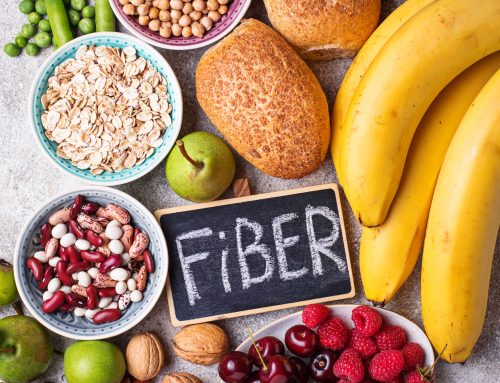Healthy eating habits require understanding a bit of psychology. Since all food decisions start in the brain, it’s no surprise that there is some mental gymnastics and rationalization involved in making food decisions.
Healthy Eating Habits are Influenced by Psychology
Healthy eating habits are influenced by psychology. Here is some interesting research that proves the point.
We all aspire to eat better—but diets are often ineffective fads, and even the most scientifically sound advice is only as good as our ability to follow it. To help, we’ve compiled research from Kellogg faculty on the science of making smart decisions about food.
Several Examples of Healthy Eating Habits and Psychological Influences
1. Don’t Be Fooled by the “Side-Salad Illusion.”
It turns out we’re not always rational in our approach to food.
Alexander Chernev, Marketing Professor, conducted research that demonstrates that many people believe that adding a healthy side dish to an otherwise unhealthy meal makes it less fattening. And the more committed a person is to their diet, the more likely they are to fall for this “side-salad illusion. People often behave in a way that is illogical and ultimately counterproductive to their goals. His research illustrates the point:
In his study, more than 1,000 respondents were asked to estimate the calorie count of a variety of meals.
- About half the respondents were shown a series of unhealthy meals, for example a hamburger or cheesesteak
- The rest were shown the same unhealthy meals accompanied by a healthy item, such as celery sticks or an apple.
- Those who saw the meals that included a healthy side dish guessed the overall calorie count to be much lower.
- They somehow believed the veggies or fruit had somehow subtracted calories from the unhealthy meals.
According to Chernev, this failure of logic arises from a fundamental flaw in the way we think about food.
“People think of food in terms of vice and virtue. So when we add something healthy to an unhealthy food, we think it makes the entire meal healthier. And because we often confuse a meal’s healthiness with its calorie content, we think that healthier meals are also more diet-friendly.”
2. Know When Your Self-Control Is Lowest
Even when we try to stick to a healthy regime, the occasional splurge can be inevitable. And according to research by Rima Touré-Tillery, an associate professor of marketing, it is more likely to occur when we are in the middle of something. She tested her hypothesis:
- When she placed Kit Kat bars and raisins on a table in a business school hallway, students were more likely to choose the Kit Kat bar if the sign said “Keep your day going!” instead of “Start your afternoon!” or “End your morning!”
- “Actions at the beginning and end of a sequence appear to reflect more on our own personal standards than actions in the middle
- In other words, when we stray from our goals in the middle of a given sequence, we damage our self-image less than when we stray at the beginning or end.
- And that happens whether the sequence is real or imagined. After all, the middle of the day is no different than the start of the afternoon.”
The phenomenon transcends snacking habits. The researchers also found that people are more willing to spend money in the middle of a sequence.
3. Trick Your Kids into Eating Better
What about getting your kids to eat healthier? Some parents promise their children rewards for eating healthy foods. But what if they tried limiting their kids’ access to broccoli and spinach?
That’s the advice (with qualifications) of Michal Maimaran, a research associate professor of marketing, and Yuval Salant, an associate professor of managerial economics and decision sciences.
The couple’s research finds that if parents want fresh vegetables to be in high demand, they should create the illusion of scarcity.
- In one study, two groups of children were offered carrots and crackers.
- But only the second group was told, “We are almost out of carrots.”
- This second group actually ate more carrots than crackers, while the group that was not told that the carrots were in limited supply ate half as many carrots as crackers.
- A related trick: stop telling kids that vegetables are good for them.
In previous research, Maimaran found that three to five-year-olds will eat less of a food if they are told that it will make them healthier or stronger. A more effective approach would be to emphasize how good it tastes.
4. Stop Blaming Restaurants
Does eating in restaurants cause obesity? Many policymakers assume so. Los Angeles, for example, won’t permit new fast-food restaurants to open in South L.A., an area struggling with obesity, and many states and cities require chain restaurants to print nutrition information on menus.
But according to finance professor David Matsa, restaurants might not be the problem.
- Matsa and his coauthor analyzed real-world data, including surveys on calorie consumption and maps of accessibility to restaurants.
- Their goal was to figure out whether people who live closer to restaurants weigh more than those who live farther away.
- And they found that proximity to restaurants did not lead to increased body mass.
- Yes, people who live near restaurants tend to eat out more, and people eat more when they eat in restaurants, but Matsa found that diners compensate by limiting what they eat at home throughout the rest of the day.
- When it comes to obesity, restaurants might play a role, but not the one we think.
Click here to read entire article about how healthy eating habits are driven by psychology.







